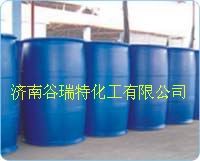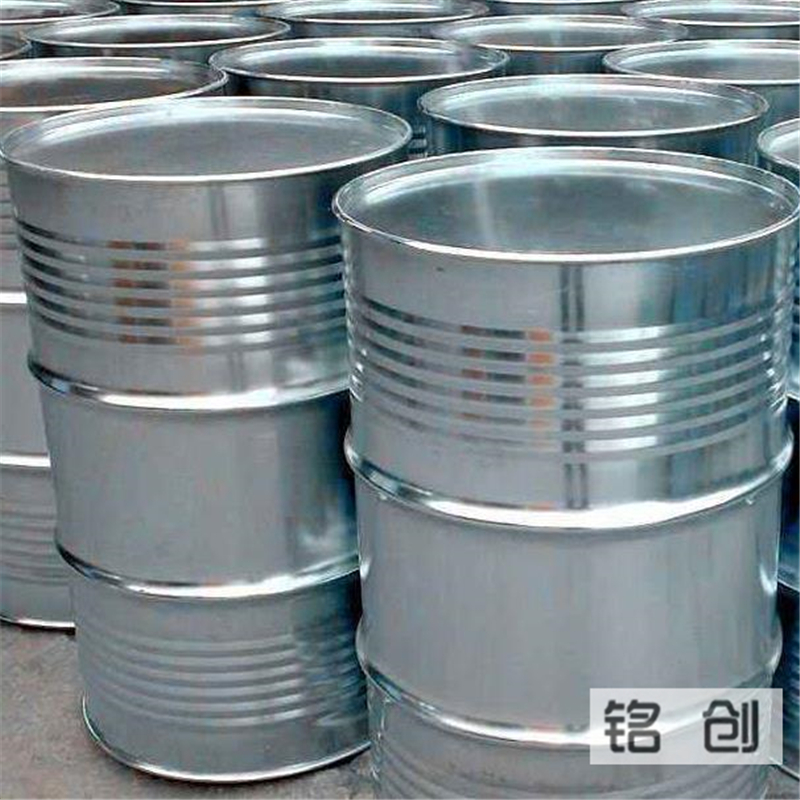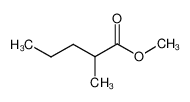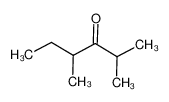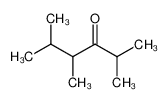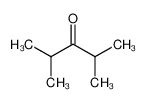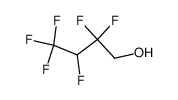| Product name | methyl formate |
|---|
| Product number | - |
|---|---|
| Other names | methyl-formate |
| Identified uses | For industry use only. Food additives -> Flavoring Agents |
|---|---|
| Uses advised against | no data available |
| Company | MOLBASE (Shanghai) Biotechnology Co., Ltd. |
|---|---|
| Address | Floor 4 & 5, Building 12, No. 1001 North Qinzhou Road, Xuhui District, Shanghai, China |
| Telephone | +86(21)64956998 |
| Fax | +86(21)54365166 |
| Emergency phone number | +86-400-6021-666 |
|---|---|
| Service hours | Monday to Friday, 9am-5pm (Standard time zone: UTC/GMT +8 hours). |
Flammable liquids, Category 1
Acute toxicity - Oral, Category 4
Eye irritation, Category 2
Acute toxicity - Inhalation, Category 4
Specific target organ toxicity – single exposure, Category 3
2.2 GHS label elements, including precautionary statements| Pictogram(s) | 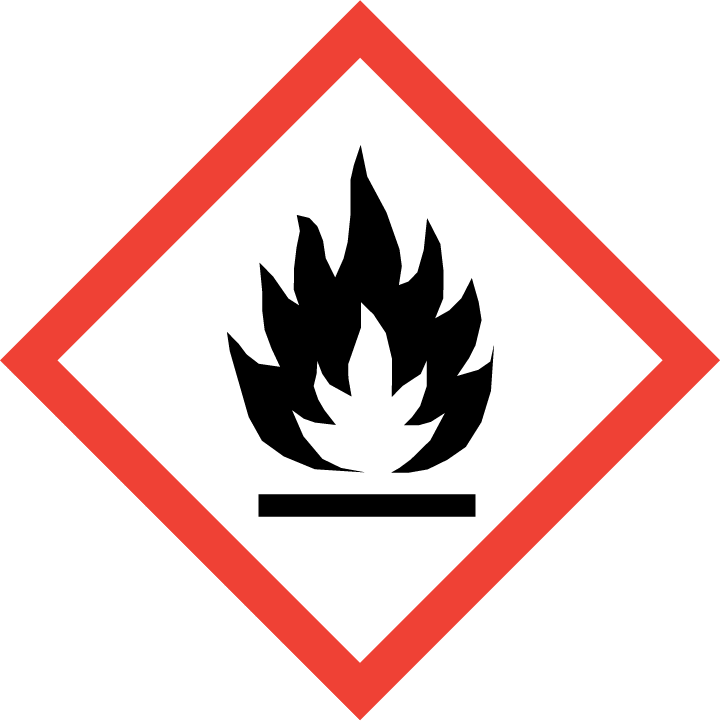  |
|---|---|
| Signal word | Danger |
| Hazard statement(s) | H224 Extremely flammable liquid and vapour H302 Harmful if swallowed H319 Causes serious eye irritation H332 Harmful if inhaled H335 May cause respiratory irritation |
| Precautionary statement(s) | |
| Prevention | P210 Keep away from heat, hot surfaces, sparks, open flames and other ignition sources. No smoking. P233 Keep container tightly closed. P240 Ground and bond container and receiving equipment. P241 Use explosion-proof [electrical/ventilating/lighting/...] equipment. P242 Use non-sparking tools. P243 Take action to prevent static discharges. P280 Wear protective gloves/protective clothing/eye protection/face protection. P264 Wash ... thoroughly after handling. P270 Do not eat, drink or smoke when using this product. P261 Avoid breathing dust/fume/gas/mist/vapours/spray. P271 Use only outdoors or in a well-ventilated area. |
| Response | P303+P361+P353 IF ON SKIN (or hair): Take off immediately all contaminated clothing. Rinse skin with water [or shower]. P370+P378 In case of fire: Use ... to extinguish. P301+P312 IF SWALLOWED: Call a POISON CENTER/doctor/…if you feel unwell. P330 Rinse mouth. P305+P351+P338 IF IN EYES: Rinse cautiously with water for several minutes. Remove contact lenses, if present and easy to do. Continue rinsing. P337+P313 If eye irritation persists: Get medical advice/attention. P304+P340 IF INHALED: Remove person to fresh air and keep comfortable for breathing. P312 Call a POISON CENTER/doctor/…if you feel unwell. |
| Storage | P403+P235 Store in a well-ventilated place. Keep cool. P403+P233 Store in a well-ventilated place. Keep container tightly closed. P405 Store locked up. |
| Disposal | P501 Dispose of contents/container to ... |
none
3.Composition/information on ingredients 3.1 Substances| Chemical name | Common names and synonyms | CAS number | EC number | Concentration |
|---|---|---|---|---|
| methyl formate | methyl formate | 107-31-3 | none | 100% |
Consult a physician. Show this safety data sheet to the doctor in attendance.
If inhaledFresh air, rest. Refer for medical attention.
In case of skin contactRemove contaminated clothes. Rinse skin with plenty of water or shower.
In case of eye contactFirst rinse with plenty of water for several minutes (remove contact lenses if easily possible), then refer for medical attention.
If swallowedRinse mouth. Do NOT induce vomiting. Rest. Refer for medical attention .
4.2 Most important symptoms/effects, acute and delayedInhalation causes irritation of mucous membranes. Prolonged inhalation can produce narcosis and central nervous symptoms, including some temporary visual disturbance. Contact with liquid irritates eyes and may irritate skin if allowed to remain. Ingestion causes irritation of mouth and stomach and central nervous system depression, including visual disturbances. (USCG, 1999)
4.3 Indication of immediate medical attention and special treatment needed, if necessaryRemoval to fresh air, immediate removal of contact lenses and contaminated clothing and washing of the skin followed by adequate rest is recommended. Respiratory irritation may be ameliorated by inhalation of a mist of a 5% sodium bicarbonate solution. If pulmonary edema develops, medical advice should be sought. Oxygen should be administered if the patient exhibits signs of respiratory failure.
5.Fire-fighting measures 5.1 Extinguishing media Suitable extinguishing mediaIf material on fire or involved in fire: Do not extinguish unless flow can be stopped. Use "alcohol" foam, dry chemical or carbon dioxide. Cool all affected containers with flooding quantities of water. Apply water from as far a distance as possible. Do not use water on material itself.
5.2 Specific hazards arising from the chemicalBehavior in Fire: Vapor is heavier than air and may travel considerable distance to a source of ignition and flash back. (USCG, 1999)
5.3 Special protective actions for fire-fightersWear self-contained breathing apparatus for firefighting if necessary.
6.Accidental release measures 6.1 Personal precautions, protective equipment and emergency proceduresUse personal protective equipment. Avoid dust formation. Avoid breathing vapours, mist or gas. Ensure adequate ventilation. Evacuate personnel to safe areas. Avoid breathing dust. For personal protection see section 8.
6.2 Environmental precautionsRemove all ignition sources. Evacuate danger area! Consult an expert! Personal protection: complete protective clothing including self-contained breathing apparatus. Ventilation. Collect leaking liquid in sealable containers. Absorb remaining liquid in sand or inert absorbent. Then store and dispose of according to local regulations.
6.3 Methods and materials for containment and cleaning up1. Remove all ignition sources. 2. Ventilate area of spill or leak. 3. For small quantities, absorb on paper towels. Evaporate in a safe place (such as a fume hood). Allow sufficient time for evaporating vapors to completely clear the hood ductwork. Burn the paper in a suitable location away from combustible materials. Large quantities can be reclaimed or collected and atomized in a suitable combustion chamber.
7.Handling and storage 7.1 Precautions for safe handlingAvoid contact with skin and eyes. Avoid formation of dust and aerosols. Avoid exposure - obtain special instructions before use.Provide appropriate exhaust ventilation at places where dust is formed. For precautions see section 2.2.
7.2 Conditions for safe storage, including any incompatibilitiesFireproof. Separated from strong oxidants. Cool.Store in cool, dry, well-ventilated location. Seperate from alkalis, oxidizing materials, and moisture. Outside or detached storage is prefered.
8.Exposure controls/personal protection 8.1 Control parameters Occupational Exposure limit valuesRecommended Exposure Limit: 10 Hr Time-Weighted Avg: 100 ppm (250 mg/cu m).
Recommended Exposure Limit: 15 Min Short-Term Exposure Limit: 150 ppm (375 mg/cu m).
Biological limit valuesno data available
8.2 Appropriate engineering controlsHandle in accordance with good industrial hygiene and safety practice. Wash hands before breaks and at the end of workday.
8.3 Individual protection measures, such as personal protective equipment (PPE) Eye/face protectionSafety glasses with side-shields conforming to EN166. Use equipment for eye protection tested and approved under appropriate government standards such as NIOSH (US) or EN 166(EU).
Skin protectionWear impervious clothing. The type of protective equipment must be selected according to the concentration and amount of the dangerous substance at the specific workplace. Handle with gloves. Gloves must be inspected prior to use. Use proper glove removal technique(without touching glove's outer surface) to avoid skin contact with this product. Dispose of contaminated gloves after use in accordance with applicable laws and good laboratory practices. Wash and dry hands. The selected protective gloves have to satisfy the specifications of EU Directive 89/686/EEC and the standard EN 374 derived from it.
Respiratory protectionWear dust mask when handling large quantities.
Thermal hazardsno data available
9.Physical and chemical properties| Physical state | colourless liquid |
|---|---|
| Colour | Colorless liquid [Note: A gas above 89 degrees F]. |
| Odour | Agreeable |
| Melting point/ freezing point | 78°C(lit.) |
| Boiling point or initial boiling point and boiling range | 32-34°C(lit.) |
| Flammability | Class IA Flammable Liquid: Fl.P. below 22.78°C and BP below 37.78°C.Extremely flammable. |
| Lower and upper explosion limit / flammability limit | Lower: 4.5% Upper: 23% (by volume) |
| Flash point | -19°C |
| Auto-ignition temperature | 450°C |
| Decomposition temperature | no data available |
| pH | no data available |
| Kinematic viscosity | 0.325 mPa-s at 25°C |
| Solubility | greater than or equal to 100 mg/mL at 22.22°C |
| Partition coefficient n-octanol/water (log value) | log Kow = 0.03 |
| Vapour pressure | 32.91 psi ( 55 °C) |
| Density and/or relative density | 0.974g/mLat 20°C(lit.) |
| Relative vapour density | 2.1 (vs air) |
| Particle characteristics | no data available |
no data available
10.2 Chemical stabilityStable under recommended storage conditions.
10.3 Possibility of hazardous reactionsFlammable liquid.The vapour is heavier than air and may travel along the ground; distant ignition possible.METHYL FORMATE reacts with acids to liberate heat along with alcohols and acids. Strong oxidizing acids may cause a vigorous reaction that is sufficiently exothermic to ignite the reaction products. Heat is also generated with caustic solutions. Flammable hydrogen is generated by mixing with alkali metals and hydrides.
10.4 Conditions to avoidno data available
10.5 Incompatible materialsStrong oxidizers [Note: Reacts slowly with water to form methanol and formic acid].
10.6 Hazardous decomposition productsWhen heated to decomposition it emits acrid smoke and irritating fumes.
11.Toxicological information Acute toxicity- Oral: LD50 Rat oral 1500 mg/kg bw
- Inhalation: LC50 Rat inhalation >5.2 mg/L/4 hr
- Dermal: no data available
no data available
Serious eye damage/irritationno data available
Respiratory or skin sensitizationno data available
Germ cell mutagenicityno data available
Carcinogenicityno data available
Reproductive toxicityno data available
STOT-single exposureno data available
STOT-repeated exposureno data available
Aspiration hazardno data available
12.Ecological information 12.1 Toxicity- Toxicity to fish: no data available
- Toxicity to daphnia and other aquatic invertebrates: EC50 Daphnia magna (Water flea; immobilization) >500 mg/L/24 hr /Conditions of bioassay not specified in source examined
- Toxicity to algae: EC50 Scenedesmus subspicatus (Green algae; cell multiplication inhibition) 240 mg/L/72 hr /Conditions of bioassay not specified in source examined
- Toxicity to microorganisms: no data available
ANAEROBIC: Methyl formate was listed as amenable to anaerobic microbial metabolism(1).
12.3 Bioaccumulative potentialAn estimated BCF of 3.2 was calculated for methyl formate(SRC), using a log Kow of 0.03(1) and a regression-derived equation(2). According to a classification scheme(3), this BCF suggests the potential for bioconcentration in aquatic organisms is low(SRC).
12.4 Mobility in soilThe Koc of methyl formate is estimated as 25(SRC), using a log Kow of 0.03(1)and a regression-derived equation(2). According to a classification scheme(3), this estimated Koc value suggests that methyl formate is expected to have very high mobility in soil.
12.5 Other adverse effectsno data available
13.Disposal considerations 13.1 Disposal methods ProductThe material can be disposed of by removal to a licensed chemical destruction plant or by controlled incineration with flue gas scrubbing. Do not contaminate water, foodstuffs, feed or seed by storage or disposal. Do not discharge to sewer systems.
Contaminated packagingContainers can be triply rinsed (or equivalent) and offered for recycling or reconditioning. Alternatively, the packaging can be punctured to make it unusable for other purposes and then be disposed of in a sanitary landfill. Controlled incineration with flue gas scrubbing is possible for combustible packaging materials.
14.Transport information 14.1 UN Number| ADR/RID: UN1243 | IMDG: UN1243 | IATA: UN1243 |
| ADR/RID: METHYL FORMATE |
| IMDG: METHYL FORMATE |
| IATA: METHYL FORMATE |
| ADR/RID: 3 | IMDG: 3 | IATA: 3 |
| ADR/RID: I | IMDG: I | IATA: I |
| ADR/RID: no | IMDG: no | IATA: no |
no data available
14.7 Transport in bulk according to Annex II of MARPOL 73/78 and the IBC Codeno data available
15.Regulatory information 15.1 Safety, health and environmental regulations specific for the product in question| Chemical name | Common names and synonyms | CAS number | EC number |
|---|---|---|---|
| methyl formate | methyl formate | 107-31-3 | none |
| European Inventory of Existing Commercial Chemical Substances (EINECS) | Listed. | ||
| EC Inventory | Listed. | ||
| United States Toxic Substances Control Act (TSCA) Inventory | Listed. | ||
| China Catalog of Hazardous chemicals 2015 | Listed. | ||
| New Zealand Inventory of Chemicals (NZIoC) | Listed. | ||
| Philippines Inventory of Chemicals and Chemical Substances (PICCS) | Listed. | ||
| Vietnam National Chemical Inventory | Not Listed. | ||
| Chinese Chemical Inventory of Existing Chemical Substances (China IECSC) | Listed. | ||
| Creation Date | Aug 10, 2017 |
|---|---|
| Revision Date | Aug 10, 2017 |
- CAS: Chemical Abstracts Service
- ADR: European Agreement concerning the International Carriage of Dangerous Goods by Road
- RID: Regulation concerning the International Carriage of Dangerous Goods by Rail
- IMDG: International Maritime Dangerous Goods
- IATA: International Air Transportation Association
- TWA: Time Weighted Average
- STEL: Short term exposure limit
- LC50: Lethal Concentration 50%
- LD50: Lethal Dose 50%
- EC50: Effective Concentration 50%
- IPCS - The International Chemical Safety Cards (ICSC), website: http://www.ilo.org/dyn/icsc/showcard.home
- HSDB - Hazardous Substances Data Bank, website: https://toxnet.nlm.nih.gov/newtoxnet/hsdb.htm
- IARC - International Agency for Research on Cancer, website: http://www.iarc.fr/
- eChemPortal - The Global Portal to Information on Chemical Substances by OECD, website: http://www.echemportal.org/echemportal/index?pageID=0&request_locale=en
- CAMEO Chemicals, website: http://cameochemicals.noaa.gov/search/simple
- ChemIDplus, website: http://chem.sis.nlm.nih.gov/chemidplus/chemidlite.jsp
- ERG - Emergency Response Guidebook by U.S. Department of Transportation, website: http://www.phmsa.dot.gov/hazmat/library/erg
- Germany GESTIS-database on hazard substance, website: http://www.dguv.de/ifa/gestis/gestis-stoffdatenbank/index-2.jsp
- ECHA - European Chemicals Agency, website: https://echa.europa.eu/






